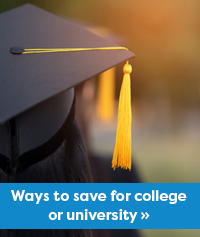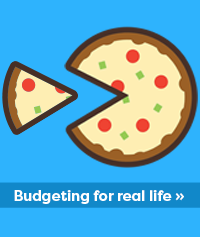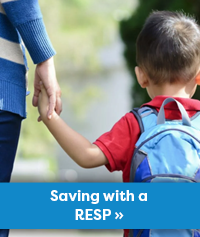The Better Way to Repay Student Loans

If you’re nearing the end of your post-secondary program, you may find yourself as equally excited as you are anxious about the future. As you prepare for the next steps of your journey, you’re likely thinking about where you want to work, where you want to live, and how you’re going to reach your long-term financial goals. Student debt, however, can complicate your post-secondary outlook.
In July 2022, nearly two million Canadians owed the federal government a total of $23.5 billion in federal student loans, with an average debt per person of $15,578 at graduation. While student loans are extremely helpful to students struggling to cover the cost of attending school, repaying the debt after graduation can be stressful if you don’t have a plan in place. In this article, we’ll explore student loan debt and discuss the best ways to repay so you can reach your financial goals sooner.
Student Loan Options
When obtaining a post-secondary education, students have a few different options for taking out student loans, including federal government loans, provincial and territorial loans, and loans through financial institutions.
The federal government offers two education financial assistance programs, which are the Canada Student Loan Program and the Canada Student Grants Program. Through the former, full-time students can receive up to 60% of the cost of their tuition which they will need to repay, plus interest, upon graduating. Through the latter, students are awarded grants based on financial need and are not obligated to repay them.
The details surrounding provincial and territorial loans will depend on where you live. For students in our Province, a Nova Scotia Student Loan offers a maximum of $200 per week of study, and a Nova Scotia Student Grant is non-repayable and upfront, providing students with 40% of any Nova Scotia Student Loan. Financial institutions such as banks or credit unions will vary in what they offer as well. For example, CUA offers a competitive interest rate for student lines of credit, with amounts up to $40,000 for undergraduate degrees and up to $70,000 for professional designations.
Repaying early
By law, students have a six-month grace period after their studies end before they have to start paying back their loans. During this period, no interest accumulates on Canada Student Loans (but other loan programs may vary). For students who would like to get ahead of their debt, starting repayment early brings down the principal amount (the size of the loan that you have to repay) before interest begins accumulating, resulting in less interest owed. So even though you’re not required to make loan payments prior to graduating, if you’re able to do so, you can end up saving long-term.
Getting organized
When planning to pay off your debt, start by organizing what you owe. If you have multiple loans, organize them from the highest interest rate charged to the lowest. After making the minimum payments required on each loan, you’ll want to prioritize any extra funds towards paying off the loan with the highest interest rate first. This will allow you to get out of debt faster.
Making your payments
While you can absolutely follow the payment plan provided for you (the Canada Student Loan Program recommends a term of 10 years), you may also be able to customize your payment terms by decreasing or increasing your monthly payment amount to better suit your budget. Keep in mind that by decreasing your payment amount, you’re increasing the length of time it will take you to repay your loan, as well as the total interest paid. If you’d like to pay off your loan more quickly, consider making more than the minimum payment. Even a small amount, such as an extra $25 per month, adds up to $300 per year going directly towards your principal. Over several years this can help lower the cost of interest significantly. Talk to your loan provider to determine if there are options available to customize or adjust your repayment terms.
It's important to stay on track with your payments, not only to pay down your debt in a timely manner, but also because falling behind on your student loan repayments can negatively impact your credit score. Lenders use this information as part of determining how trustworthy you are to repay loans, mortgages, or personal lines of credit. Someday you may be looking forward to buying a home, financing a vehicle, or even getting a credit limit increase, all of which will be made more difficult with a poor credit history. Regular payments now demonstrate that you can be relied upon to pay back your debts.
Building long-term financial goals
While your main financial priorities after graduating will be establishing a permanent job and beginning to pay back student loans, your second priority should be to start building up some savings. With every paycheck, try to allocate some funds to ‘pay yourself’. By setting aside money consistently, whether it be for long-term savings, an emergency fund, or to cover unexpected bills, you’ll provide yourself with a cushion so that you won’t have to rely on additional credit or loans for everyday expenses.
As you navigate life after post-secondary education, remember to take it day by day. The most important part of paying off debt is staying organized, so make sure to keep track of what you owe and when your minimum payments are due. If you have any additional questions about student loan debt and long-term financial planning, we would be more than happy to meet with you. Call or email us any time at 902.492.6500 or info@cua.com.
Published Sep 1, 2023






